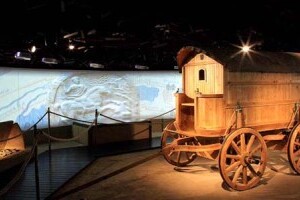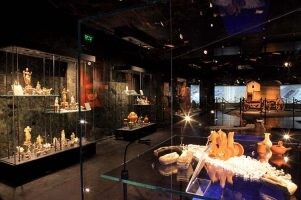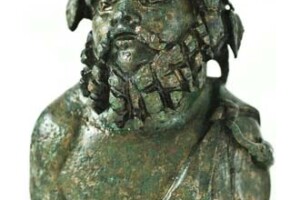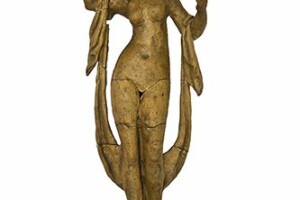
Roman legend says that in the VIII century BC, the daughter of King Numitor, Rhea Silvia, was abused by the Roman god of war Mars, and as a result she gave birth to two strong twin boys. Fearing their divine nature, the king ordered the children to be drowned in the Tiber River, but under the protection of the gods, they survived and were washed ashore. The children were found by a she-wolf, who nursed them and raised them as her own.
When they grew up, the brothers Romulus and Remus decided to form their own city in the heart of the Apennine Peninsula, beside the Tiber but, due to disagreements over the city, Romulus killed Remus and the new city was named after Romulus; today it is known as Rome. Established as a monarchy and governed by a king, in a constant struggle with its neighbors and with only four years of peace during several centuries, the city of Rome by the fifth century arose as the largest and most influential factor for the whole Italian Peninsula. But tradition says that the cruelty of its kings turned Rome into a Republic that soon would change the picture of the known world.
The rapid rise of Rome, from a small insignificant town along the river Tiber, into the military Republic that controlled the entire Apennine Peninsula, removed the necessity of further spread and eliminated the economic competition. Conditions, practicality, dedication, efficiency and pride of the family name already contributed to the II century BC Roman Republic to conquer the majority of the western Mediterranean, but the pearl of their success was the conquest of the glorious Macedonian kingdom in the years 168 and 148 BC. This success opened the roads for their conquests in the East, filling the city with great treasures and cultural achievements, but above all conquering the primacy of unquestionably the most powerful factor in the ancient world.
In the centuries that followed, this powerful republic was transformed into the largest world empire known in human history, which spread over three continents and covered the entire Mediterranean, almost all of Europe and half of the British Isles, existing through an incredible twelve centuries. Through emperors as Gaius Julius Caesar, Augustus, Nero, Titus, Trajan, Hadrian, but also with its role in the beginnings of Christianity, the empire would be remembered for eternity as an example for all other empires and current alliances. However, it ended in a barbaric way in the year 476 AD, continuing to exist through the eastern Roman Empire, later known as Byzantium.
The universal values that Rome brought to its residents completely changed their ancient way of life. The military and organizational supremacy of Rome, in comparison with all its contemporaries, contributed to the peace and stability of all its territories, allowing peaceful Roman life in the valleys and also in the larger economic centers, i.e., in the cities. Roman urban life received a new dimension with unified global values such as the monetary system, education, culture, language, medicine and public sanitation, but without forgetting the old values like tradition, religion, language and customs.
Soon the peaceful life contributed to a sharp increase in the number of residents in the cities, developing craftsmanship and emphasizing the need for new, impressive, and larger public structures and also supplying the structures with drinkable water, including temples, forums, public baths, theaters, arenas; all the popular places for socializing, relaxation, massage and business agreements; all built with the less known material then – concrete ( base of all the current structures).
Although, the former kingdom of Macedonia was officially under Roman administration in the II century BC and played a major role in the first Roman civil war, through previous research it was shown that the territory of a current Macedonia reached full urban Roman influence in the I-II century AD, when the situation in the Balkans was securely stabilized. This situation resulted from new, expanded and paved roads, such as the famous Via Egnatia, as it was marked onn all of the world’s antique maps.
The rapid and the free movement of commerce, military and the population, except new ideas, techniques and technologies, brought a number of “new” cults, primarily Egyptian and Persian, but also brought Christianity, which although, first convicted and severely punished, until the fall of Rome, will be declared and recognized as a state religion in the Empire.
The major roads made communication easier and also sped up the movement of people, goods and ideas. In a short period of time, Macedonian economy recovered and stabilized. The new “Urban elite” and war veterans stood out because of their property, splendor, and luxury items, living in the richly decorated city houses and villas, like the ones at the site of Stakina Cheshma in Valandovo, outside the well-known urban city centers like Scupi, Stobi, Heraklea, Stibera, and Marvinci.
The Archaeological Museum of Macedonia in its permanent exhibition has united almost all representative and unique Roman artifacts from all over Macedonia, except from the Roman city of Scupi. So, with more than 250 artifacts, the daily life of the residents of the Roman Empire is completely reconstructed, as well as their beliefs, fears, jewelry, luxury, and funerary objects, which watched over the deceased in the afterlife.
In addition to the completely reconstructed funeral and ritual carriage, the Roman department at the museum is especially proud of a few rare examples of artifacts, which for the first time are presented in our museum. Here we can include the following: bronze autepsa, a rich collection of small multicolored glass bottles, the terracotta figurines of “Aphrodite with the apple of Paris” and “Dancer with cymbals”, posthumous childish toy “Horsemen” and the three richly decorated wooden boxes for cosmetics or medicine, all of them more than 18 centuries old.
M.A. Jane Klekovski
- Custodian advisor for Roman period
- yaneklekovski@yahoo.com











